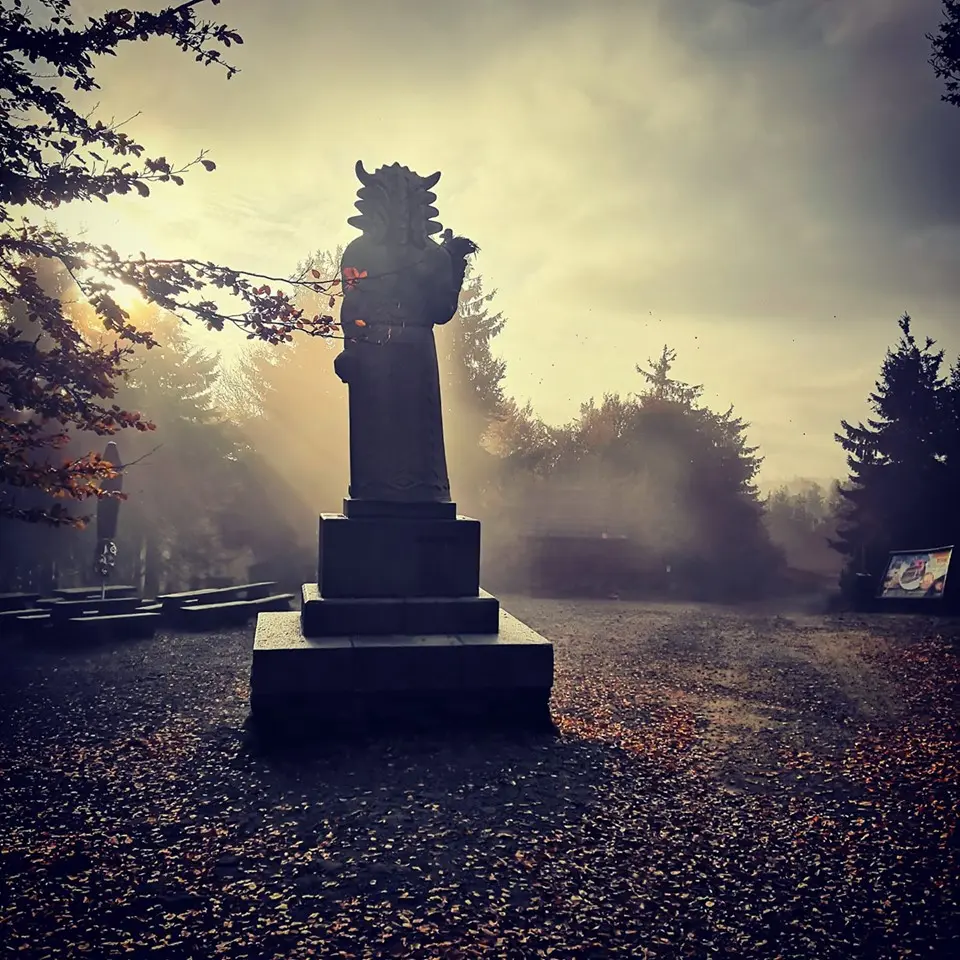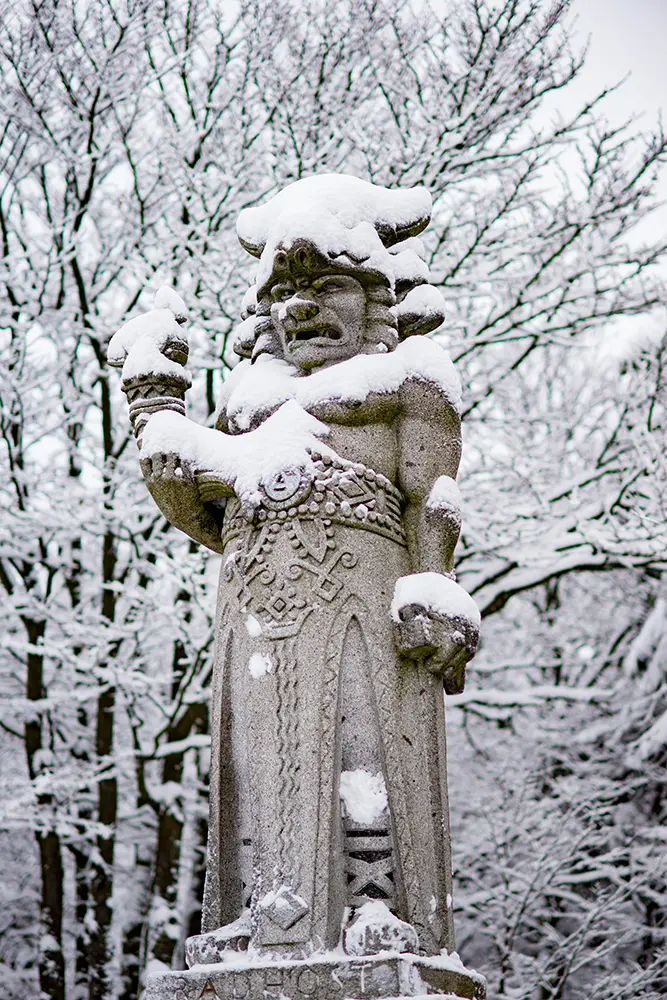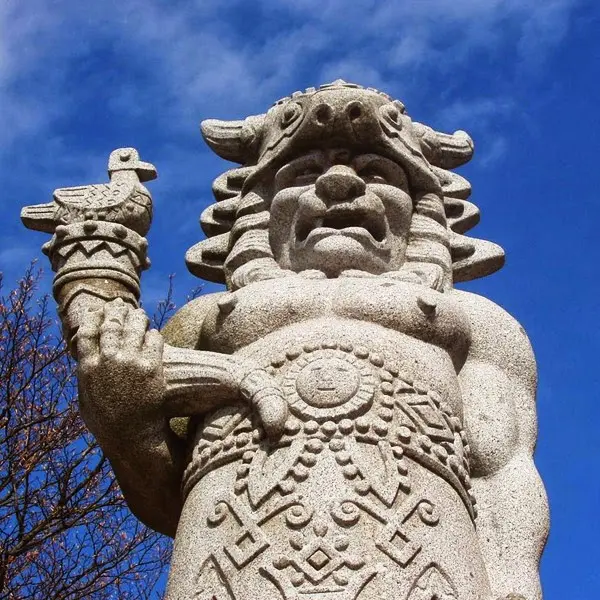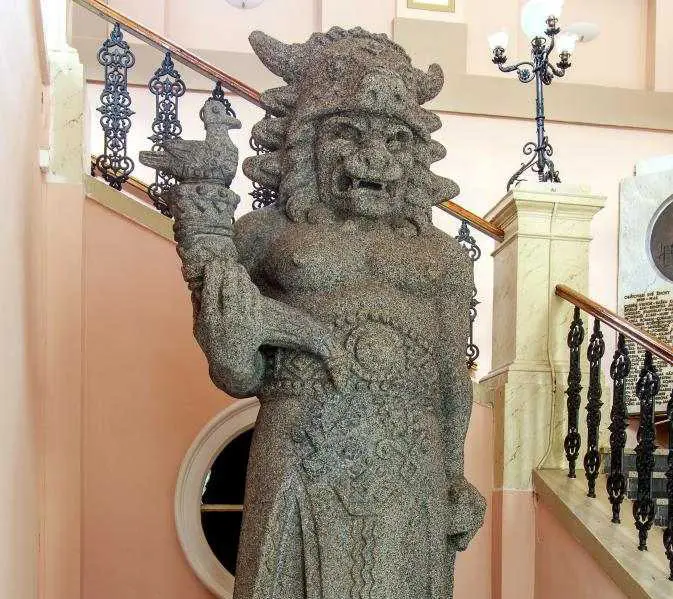The statue of Radegast
The statue of Radegast, the Slavic pagan god of sun, abundance, and harvest.
Radegast is one of the unmistakable symbols of Radhošť in the Beskydy Mountains, specifically of the saddle beneath Radhošť, located exactly halfway along the trail from Pustevny to Radhošť at an altitude of 1,120 meters above sea level.
Tip for an Outing
You can easily reach the Radegast statue from Pustevny via a wide path marked with the blue tourist sign, which is also part of the European long-distance trail E3.
What the legends say
Radegast was a pagan god worshiped mainly by Slavic tribes from the Baltic region. However, how his cult reached Radhošť remains unknown.
The original giant statue of Radegast was reportedly carved from wood, adorned with pure gold armor, and topped with a fearsome helmet. It was part of a shrine where, in addition to animals, humans might also have been sacrificed. The missionaries Cyril and Methodius ordered the pagan idol to be torn down, chopped up, and burned. However, pagan priests managed to save the statue and hide it somewhere inside the mountain in an underground sanctuary, where it may still be hidden to this day.


Poláškův Radegast
The statue of Radegast, as we know it today, is the work of the academic sculptor Albín Polášek, a native of Frenštát pod Radhoštěm. Polášek began working on this iconic figure as early as 1924, producing several versions while he was in America. In 1930, he rented Novák’s studio in Prague, where he crafted the final version. The statue depicts a male body with a lion-like face and a helmet resembling a bull’s head with horns. In his right hand, Radegast holds a cornucopia, symbolizing abundance, and in his left, an axe. This distinctive appearance emphasizes both the deity’s power and his association with prosperity.
Polášek’s statue of Radegast, made of concrete and stoneware grit, was installed in its place in 1931, with the ceremonial unveiling taking place on the 5th. 7. 1931. This original statue, measuring 320 cm and weighing 1.4 tons, was funded by compatriots living in America, who donated the statue to their homeland. The statue is deliberately positioned with its back to approaching visitors.
Restoration
However, the material of Radegast did not tolerate the harsh climatic conditions on Radhošť very well. The statue had to be dismantled and restored, which was carried out in 1980 under the direction of Olomouc sculptor Karel Hořínek. The statue was returned to its original location on June 11, 1982.


Relocation
Despite an expensive restoration, the material degradation of the Radegast statue continued. Therefore, in 1996, the statue was removed from Radhošť and placed—after necessary restoration—in the entrance hall of the town hall in Frenštát pod Radhoštěm. On the slopes of Radhošť, Radegast—or rather, his replica—was returned on the 4th. 7. 1998.
The current statue of Radegast
The replica of the Radegast statue, carved from granite for its superior resistance to harsh weather conditions, was funded by the Nosovice brewery, which features Radegast’s silhouette in its logo. Under the direction of academic sculptor Miroslav Machala, stonemason Jan Sobek from Leskovec near Vsetín crafted the new statue from a 16.5-ton granite block.







